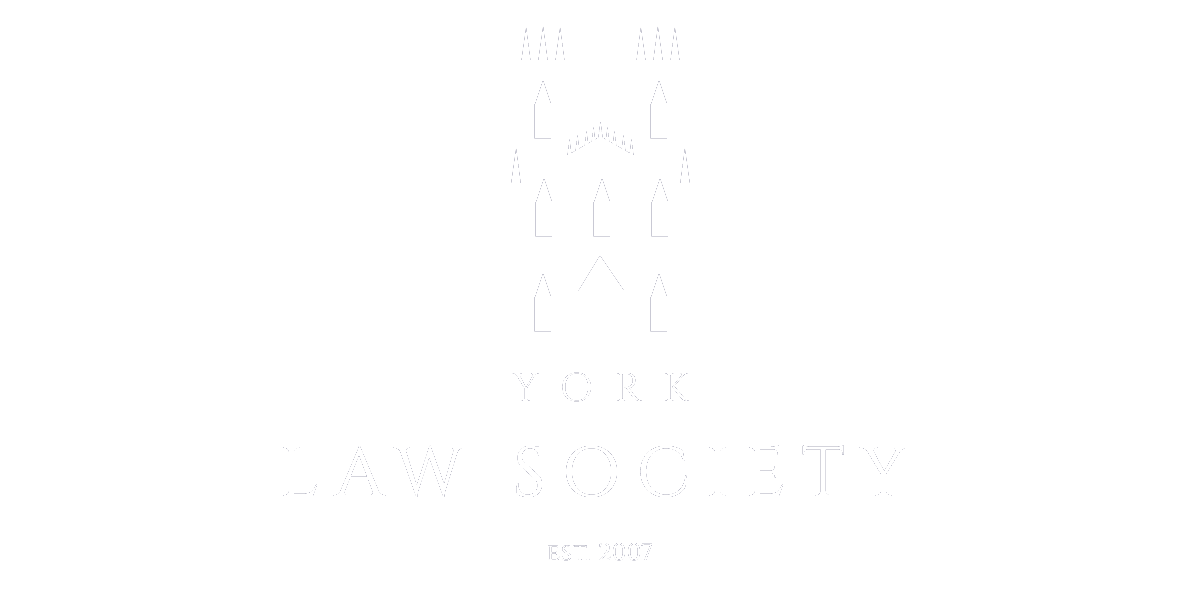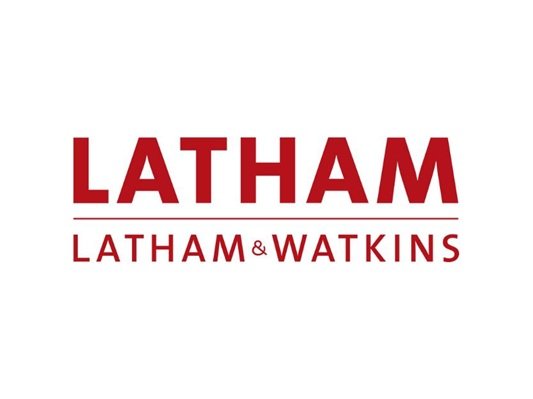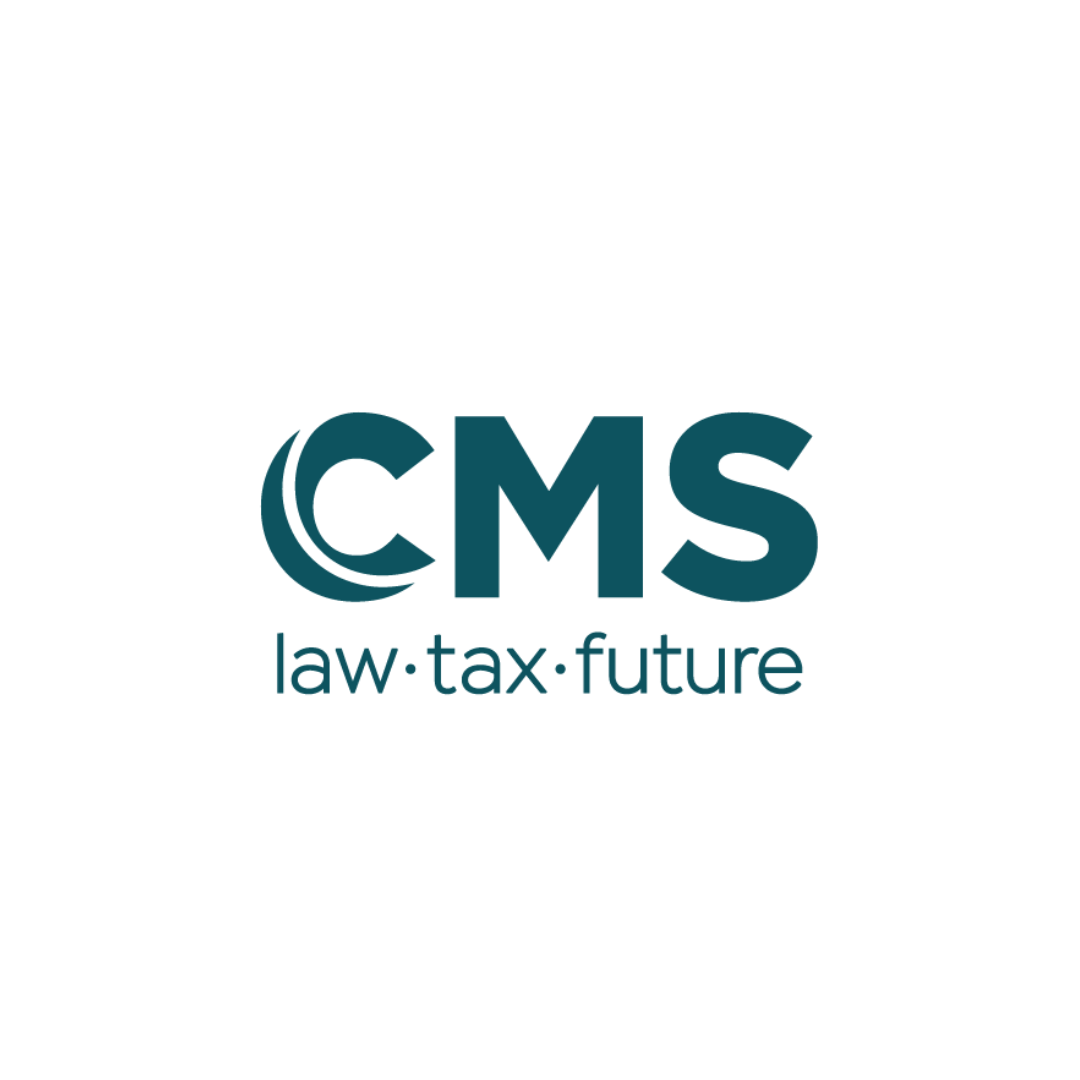INTRODUCTION
As a relatively new creature of modern technology, cryptocurrency can be difficult to comprehend. To put it simply, it can be understood as being a digital asset that is constructed to work as a medium of exchange through a mathematical encrypting method known as cryptography.1In this article, ‘cryptocurrency’ and ‘cryptoasset’ will be used interchangeably, though there is a small distinction between these terms.2 While systems similar to the exchange of crypto can be seen as early as the 1980s, the creation of Bitcoin by founder Satoshi Nakamoto in 2008 is what led to the influx of mainstream attention.3 Users are attracted to cryptocurrency, particularly because it is an “open-source currency without a central point of trust”,4referring to the blockchain technology. This is because it removes the need for a middleman allowing for quicker and cheaper transactions.5 Traditional banking lacks this feature as its function is to regulate the money in circulation and to oversee the inter-bank market to ensure that the relevant financial laws are being respected.6 However, the lack of a middleman in crypto also makes it harder to track which, in turn, makes it easier to be abused by those with illicit intentions. The cases that will be discussed in the article demonstrate how the attributes of crypto can disadvantage those whose assets have been wrongfully appropriated. While it should be noted that cryptocurrency has branched into several different classes, such as utility tokens as opposed to security tokens,7this holds little relevance to the focus of the article, and I will not go into further detail on this. To start, this article will begin by taking a broad look into cryptocurrency and its establishment under property law. Following this, we will look at the relationship cryptocurrency has with criminal law through a case study of the crypto exchange firm FTX. Finally, there will be a brief consideration of reforms that have been recently introduced and their implications on cryptocurrency. Throughout, the question of what position crypto currently holds at law and how it may evolve in the coming years will be considered. While there is no sure way to answer this, different perspectives on the topic will be discussed.
CRYPTOCURRENCY IN PROPERTY LAW
Under property law, the primary issue which arises is whether cryptocurrency can be considered personal property, and how it fits under this category. One bracket of personal property is ‘choses in possession’, otherwise known as goods; this is property which is tangible and can be physically possessed.8 Of course, cryptocurrency is digital and does not have the qualities required to fall under this bracket. The next type of personal property is ‘choses in action’, which is property that is intangible, and entails a right that can only be claimed/ enforced by action,9 such as a patent. Yet, cryptocurrency does not provide any rights which allow for claims, meaning it cannot be classified as a chose in action. What this indicates is that cryptocurrency does not fall neatly into either of these brackets, leaving it awkwardly situated in between. There have been several cases attempting to grapple with the property status of cryptoassets in law and one of the most consequential of these is the case of AA v Persons Unknown.10 The claimants had suffered a cyber-attack by the defendants who transferred themselves $950,000 worth of Bitcoin. While the claimants had been insured against cyber-attacks, the issue that arose in court was whether a cryptoasset (in this case, Bitcoin) was considered property and therefore whether a proprietary injunction could be issued. The purpose of a proprietary injunction is to prevent the defendant from handling assets that belong to the claimant.11 As mentioned earlier, the court acknowledged that cryptoassets were neither choses in action nor choses in possession,12 but suggested it would be fallacious to disregard cryptoassets as a form of property altogether.13 The courts turned to National Provincial Bank v Ainsworth, which sets out 4 criteria for something to be considered property- definable, identifiable, stable, and capable of assumption by third parties.14 When applied in AA, it was established that cryptoassets were indeed property, therefore enabling the grant of a proprietary injunction which prevented the transfer of property.15 AA was used as precedent in several cases that followed, which deemed cryptoassets as property, reinforcing the decision made.
AA has paved the way for cryptocurrency to better adjust its position within property law. For instance, this decision has resolved some of the ambiguity surrounding the legal property status of cryptoassets, helping to establish “legal certainty, predictability and confidence in the English legal system”16for complex crypto disputes. More importantly, it allows for claimants who have been deprived of their assets to be granted enforceable relief.17 A similar approach has been taken for cryptocurrencies on trust following the case of Wang v Darby, where it was implied that cryptocurrency was possible of becoming the subject of a trust under the correct context.18 Discourse on the proprietary status of cryptocurrency is seeing development internationally, as seen in the Hong Kong case of Re Gatecoin Ltd (in liquidation). Gatecoin Ltd was an online platform used to exchange over 45 types of cryptocurrencies.19It faced a cyberattack in 2016 leading to a loss of $2 million. Under Hong Kong law, a duty20is imposed on a liquidator to take into custody all “property” when a winding-up order is issued. Similar to the UK, Hong Kong legislation does not explicitly define cryptocurrencies as property, and the liquidators took this matter to court for guidance.21 As of March 2023,22in reviewing Gatecoin’s terms and conditions and accounting for the precedents in common law under other jurisdictions including English law, for the first time in Hong Kong, it was held that cryptocurrencies had the attributes of property and can be held on trust.
The progression of crypto under property law leaves room for optimism, but it can be argued that the changes being implemented are still somewhat new and there is a scarce amount of case law in this area. What this means is that crypto is not yet indefensible to abuse, especially when it is in an infant stage of development itself, which makes for a rather unstable relationship with criminal law. This is because the removal of a middleman from crypto transfer subsequently makes it an attractive tool for criminals since activity is not as heavily monitored. The type of crime which occurs includes crimes such as money laundering, tax evasion, and terrorist financing.23 Most commonly, these crimes occur between individuals, as shown in the cases above. However, what happens when criminal activity occurs on a macro level? What if the loss suffered is not by a singular party but by millions? These questions are encapsulated by a recent event: the downfall of FTX.
THE FTX SCANDAL AND FRAUD THROUGH UTILISATION OF CRYPTO ASSETS
Background
Initiated in 2019 by Sam Bankman-Fried (“SBF”), FTX was one of the leading crypto-exchange platforms. Within 3 years, the usage of the platform grew exponentially. Endorsement with several A-list celebrities, including names such as Tom Brady and Stephen Curry, as well as sponsorship deals,24 helped to instil customer confidence in the platform. On an advertisement shown at the Superbowl, FTX boasted that using their platform was the “safest and easiest way to buy and sell crypto”,25 providing them extreme prominence and reputability. Through the years, they amassed the interest of over 1 million users and large venture capitalist firms including names, such as Sequoia and Paradigm.26
The downfall of FTX correlates with its sister company, Alameda Research, which was supposed to be a de-centralised investment firm.
On the 2nd of November 2022, a crypto news site, CoinDesk, released an article which included Alameda’s balance sheet, alleging an illegitimate financial relationship between Alameda and FTX.27
To provide context, FTX had created its own digital currency on the platform called the FTT token. This provided incentives for the users that many invested in for their benefit, including reduced fees for trading.28 However, the customers were not aware that these tokens had not been distributed on a wide scale basis, which is necessary for the market to determine its price.29
Herein lies the big issue. Alameda’s balance sheet revealed that a large portion of the FTT tokens were bought by Alameda; more specifically, that of the $14.6 billion in assets on Alameda’s website, nearly half were listed as FTT tokens.30It was alleged on the criminal complaint that this was done in order for SBF to maintain the price of the token when it was dropping, which was an issue, considering that price manipulation is what allowed FTX to sell billions of dollars’ worth of FTT tokens in the first place.31 Furthermore, the complaint found that Alameda had used this to their advantage in order to gain billions in loans from lenders.32
Their predicament worsened following a $2 trillion crash in the crypto markets, leading to several of Alameda’s lenders to go bankrupt. To rectify this, SBF increasingly used the customer funds without their knowledge in order to pay off Alameda’s debts.33 Only four days after the exposé article was released, FTX’s biggest investor, Binance, announced that they were liquidating their remaining FTT tokens.34 This started a domino effect of market participants withdrawing their funds, reaching a daily withdrawal amount of $4 billion and a reduction in the value of FTTs by more than 75%.35In response, FTX halted customer withdrawals which meant that people could no longer access their assets. By November 11th, 2022, SBF finally filed for bankruptcy, along with 130 other affiliate companies.36
In total, there is around $8 billion worth of missing customer funds. SBF’s heinous misuse of these funds was corroborated by FTX co-founder Gary Wang, who admitted in court testimony that he had been directed by SBM to alter the platform to give Alameda “special privileges”, which both Wang and SBF knew was illegal.37
SBF’s trial began on the 3rd of October 2023 and is still ongoing at the time of writing. Cryptocurrency Risks
The FTX case provides two key risks and effects of cryptocurrency to users and investors.
Regulation
Firstly, there is the matter of regulation and customer protection. The FTX fiasco exemplifies how a decentralised system can disadvantage customers the most when there is a lack of a third party to hold an establishment accountable for its actions. The regulatory body for firms in the UK is the Financial Conduct Authority (“FCA”), whose purpose is to ensure financial markets are “honest, competitive and fair”.38In particular, customer protection is achieved through the FCA, who monitors firms in the financial service industry to check whether they meet appropriate standards before authorising them to provide their services;39 authorisation signifies to customers that their finances are safeguarded with that particular firm. Furthermore, the FCA has a relationship with the Financial Service Compensation Scheme (“FSCS”), which allows for compensation to be offered under FCA-regulated activity, such as in instances where firms have gone out of business and are unable to return customer funds.40 FTX failed to receive authorisation from the FCA, who even warned the public against using their services.41 This meant that those who lost their assets in the FTX collapse could not rely on the FCA or FSCS for recovery, which would have otherwise been possible had they been authorised. Retrospectively, the FCA warning customers against engaging with the platform, before SBF’s crimes were revealed, suggests the importance of an impartial regulatory entity, one which can detect inconsistencies within a firm and provide guidance in return. FTX failed significantly in this aspect as they did not have an independent Board of Directors to regulate activity and the power had been concentrated to the top between SBF and his closest accomplices.42 The only customers who managed to remain relatively unscathed were the ones in Japan- due to Japan’s strict crypto-specific regulations. As Japan requires customer assets to be held in a third-party bank or trust, it prevented the assets from being used fraudulently.43 This allowed for Japanese FTX customers to retrieve their assets and, at the moment, are close to being paid in full.44 Comparing Japan’s crypto-specific regulations to other countries where customers may go years without seeing their funds, provokes the question of whether the approach to crypto as a whole must be improved through better regulation.
However, there is evidence that suggests that this is not necessarily true, when considering the relationship between FTX and the Commodity Future Trading Commissions (“CFTC”) in America. Similarly, CFTC is an independent government agency whose role is to protect the public from abusive practises, including fraud, by regulating derivatives markets in the US.45 Yet, unlike the FCA, they gave FTX their approval in spite of the firm’s inconsistent activity. By providing their unyielding support to the platform, customers had been under the impression that FTX was safe to invest in. The goals of the CFTC become questionable when considering their biased history of wanting to expand the crypto industry.46 As the co-founder of the investor advocacy organisation Better Market puts it, “rather than aggressively regulating crypto and sceptically scrutinising its claims, the CFTC has spent most of its time cheerleading the industry and trying to expand its jurisdiction rather than worrying about investor, customer, and markets protections”.47 CFTC filed their complaint too late into the scandal, and only after FTX had been exposed by the news site.48 While it would be unreasonable to expect the CFTC to prevent every instance of fraud, the immense sloppiness they exhibited with FTX implies that they are partially at fault with the way in which American customers were treated. In turn, it can be argued that relying on a regulatory body in order to eliminate the risks associated with crypto is a naïve notion.
Market Risk
Secondly, there is a market risk related to cryptocurrency.49 The cryptocurrency market is extremely volatile, as the value of cryptoassets can fluctuate rapidly. This is not necessarily a negative trait, as customers are able to use hedging and have the opportunity of diversification to minimise risk.50 However, FTX is an example of the potential dangers associated with this fact. Considering they were the third largest platform, many traders lost their confidence in the market following their downfall, causing them to pause the exchange of tokens and some even quitting the market altogether.51 This adversely affected other platforms, such as Bitcoin. While Bitcoin was hitting records with one Bitcoin being valued at $69,000 in November of 2021, the collapse of different crypto-platforms and, in particular, FTX, resulted in the Bitcoin value falling under $16,000 just a year later.52 However, some argue that this is not a major concern, as Bitcoin has regained almost three quarters of its previous value in 2023,53 suggesting that this could have been a temporary lapse in consumer demand. There is also speculation that the adverse effect on Bitcoin’s price could be due to the general increase in interest rates of central banks in 2022, which pushed investors to invest their money into safer returns,54 showing that external factors could instead, or additionally, be responsible for these changes.
REFORMATIONS
As emphasised earlier, crypto has been used in practice for a fairly short period of time. One perspective is that we are judging its flaws far too early. For instance, the Economic Crime and Corporate Transparency Act 202355(“ECCT Act”), which only received royal assent on 26th October 2023, addresses many of these issues; particularly in the criminal aspect. One of the potential implementations debated in the House of Commons was whether “cryptoasset exchange providers”56 should be defined as a “relevant commercial organisation”57that can commit the offence of money laundering, showing the increasing appreciation of crypto crimes in law. Had this type of awareness existed previously, UK customers of FTX could have had a better chance of getting justice through reforms. This shows that the concerns surrounding cryptoassets are not being ignored. Rather, it may be argued that the crypto industry is still in its infancy, and it has not yet reached optimal performance.
CONCLUSION
The position of cryptocurrency in UK law and other jurisdictions has undeniably seen progression since its creation. The cases of Re Gatecoin, AA, and Wang serve to prove the increasing appreciation of cryptocurrency as a form of personal property, and a receptiveness to the idea of cryptocurrency being property that can be held on trust. At least in property law, cryptocurrency appears to have a promising future. However, the FTX crisis encompasses the withstanding complexities of cryptoassets. It would be extreme to declare that the singular example of FTX is unequivocal proof that the entire functionality of cryptocurrency is flawed. After all, it can be said that what FTX demonstrates is a fault of poor management rather than a fault with crypto itself. Nevertheless, FTX conveys the features of crypto that pose a potential threat to users, including the non-existent regulatory mechanisms and the immense market volatility. Of course, the introduction of the ECCT Act implies that issues with cryptocurrency have been acknowledged by the UK legislature, opening up the possibility for concrete reformations. Either way, the system of cryptocurrency is at a crossroad, and only time will tell in which direction it will go.
References
[1] Wolfgang Härdle, Cambell Harvey and Raphael Reule, ‘Understanding Cryptocurrencies’ (2020) 18(2) J. financ. econ. 181.
[2] Bank of England, ‘What are Cryptoassets (Cryptocurrencies)?’ (Bank of England, May 2020) <https://www.bankofengland.co.uk/explainers/what-are-cryptocurrencies> accessed 12 November 2023.
[3] Ingolf Pernice and Brett Scott, ‘Cryptocurrency’ (2021) 10(2) Internet Policy Rev. 1.
[4] Härdle, Harvey and Reule (n 1) 182.
[5] ibid, 182.
[6] Santander, ‘What are Central Banks and Why are They So Important?’ (Santander, February 2023) <https://www.santander.com/en/stories/what-is-a-central-bank> accessed 12th November 2023. 7ibid, 187.
[8] E Baskind, G Osborne and L Roach, Personal Property (4th edn, OUP 2022) 23.
[9] ibid.
[10] AA v Persons Unknown [2019] EWHC 3556 (Comm), [2020] 4 W.L.R.35.
[11] Ostrich Farming Corp Ltd v Ketchell [1997] 12 WLUK 502.
[12] ibid [55] Bryan J.
[13] ibid [58] Bryan J.
[14] National Provincial Bank v Ainsworth [1965] A.C. 1175, [1965] 3 W.L.R. 1.
[15] Ibid [85].
[16] Steven Baker and Julia Bihary, ‘From Cryptic to (some) Clarity: English Law and Policy Rising to The Challenge of Cryptoassets’ (2022) 37 (9) J.I.B.L.R. 2.
[17] ibid 3.
[18] ibid 4.
[19] Richard Keady and David Kwok, ‘Re Gatecoin: It’s Implications and the Future of Cryptocurrency in the Context of Insolvency Law in Hong Kong’ (Dentons, June 2023)
<https://hongkong.dentons.com/en/insights/articles/2023/june/16/re-gatecoin-its-implications-and-the-future-of-cr yptocurrency-in-hong-kong> accessed 12th November 2023.
[20] Companies (Winding Up and Miscellaneous Provisions) Ordinance (Cap. 32) s.197. 21 Keady and Kwok (n 17).
[22] ibid
[23] Alex Taylor and Micheál Floinn, ‘Bitcoin Burglaries and the Theft Act 1968’ (2021) 1(3) Crim. L.R. 163, 165.
[24] Harish Sridharan, ‘Rise and Fall of Crypto Exchange FTX’ Reuters (Bengaluru, 17 November 2022).
[25] Daniel Garrahan, ‘FTX: The Legend of Sam Bankman-Fried’ (Financial Times, 6th March 2023) <‘https://www.youtube.com/watch?v=yGGzimG8VMQ&t=1546s> accessed 25th October 2023.
[26] Srdiharan (n 24).
[27] Ian Allison, ‘Divisions in Sam Bankman-Fried’s Crypto Empire Blur on His Trading Titan Alameda’s Balance Sheet’ CoinDesk (New York, 02 November 2022).
[28] ibid.
[29] Kate Rooney, ‘The Collapse of FTX: Insiders Tell All’ (CNBC, 2nd October 2023)
<https://www.youtube.com/watch?v=XqwGt69pDXQ&t=460s> accessed 28th October 2023.
[30] Allison (n 27)
[31] FTX. (2022) Case 22-11068-JTD Doc 2642, The Criminal Complaint Form Retrieved from Commodity Futures Trading Commission <> accessed 28th October
2023https://assets.bwbx.io/documents/users/iqjWHBFdfxIU/rrbKOpIjrKN4/v0> accessed 28th October 2023.
[32] ibid.
[33] ibid.
[34] Rebecca Keating, ‘Dojima Rice and Digital Assets: New Tech, Old Problems? Market Manipulation by Cryptocurrency Exchanges’ (2022) 37(11) J.I.B.L. 756.
[35] CNBC (n 29).
[36] Sridharan (n 24).
[37] (n 31).
[38] Financial Conduct Authority, ‘About us’ (FCA, 2023) <https://www.fca.org.uk/about> accessed 28 October 2023.
[39] ibid.
[40] Financial Conduct Authority, ‘How To Claim Compensation if a Firm Fails’ (FCA, 2023) <https://www.fca.org.uk/consumers/claim-compensation-firm-fails> accessed 28 October 2023.
[41] Financial Conduct Authority, ‘FTX’ (FCA, 2023) <https://www.fca.org.uk/news/warnings/ftx> accessed 28 October 2023
[42] Charles Wood, ‘What the FTX Scandal Reveals About Third Party Risk Evaluation: In Light of The Recent FTX Scandal, This Article Takes A Look At The Third Party Risk Evaluations That Should Take Place Going Forward’ (2023) 21(1) ISSA Int. 15.
[43] OMFIF, ‘FTX Bankruptcy Will Show Importance Of Regulatory Approach’ (Official Monetary and Financial Institutions Forum, 03 February 2023)
<https://www.omfif.org/2023/02/ftx-bankruptcy-will-show-importance-of-regulatory-approach/> accessed 28 October 2023.
[44] ibid.
[45] CFTC, ‘About The Commission’ (Commodity Futures Trading Association, 2023)
<https://www.cftc.gov/About/AboutTheCommission> accessed 28 October 2023.
[46] Robin Wigglesworth, ‘We Need to Talk About The CTFC’ Financial Times (Oslo, 15 December 2023). 47ibid.
[48] ibid.
[49] Lloyd Brown, ‘Cryptocurrencies and Trustees: What Are the Risks?’ (2023) 29(3) T&L 186, 196.
[50] Hemendra Gupta and Rahsmi Chaudary, ‘An Empirical Study of Volatility in Cryptocurrency Market’ (2022) 15(11) J. Risk Financial manag. 513, 513.
[51] Hannah Lang, Elizabeth Howcroft and Tom Wilson, The Crypto Market Bears the Scars of FTX’s Collapse’ Reuters (London, 3 November 2023).
[52] ibid.
[53] ibid.
[54] Onur Özdemir, ‘Cue the Volatility Spillover in the Cryptocurrency Markets During The Covid-19 Pandemic: Evidence From DCC-GARCH and Wavelet Analysis’ (2022) 8 (12) Financial Innovation 19, 19. 55 Economic Crime and Corporate Transparency Act 2023.
[56] HC Deb 25 January 2023, vol 726, Col 1046.
[57] ibid.
BIBLIOGRAPHY
Legislation
UK Statutes
Economic Crime and Corporate Transparency Act 2023.
Other Jurisdictions
Companies (Winding Up and Miscellaneous Provisions) Ordinance (Cap. 32) s.197.
Table of Cases
UK Cases
AA v Persons Unknown [2019] EWHC 3556 (Comm), [2020] 4 W.L.R.35.
National Provincial Bank v Ainsworth [1965] A.C. 1175, [1965] 3 W.L.R. 1.
Ostrich Farming Corp Ltd v Ketchell [1997] 12 WLUK 502.
Wang v Darby [2022] EWHC 835 (Comm), [2022] 3 WLUK 592.
Other Jurisdictions
Re Gatecoin Ltd (in Liquidation) [2023] HKCFI 914.
FTX. (2022) Case 22-11068-JTD Doc 2642, ‘The Criminal Complaint Form’.
Hansard
HC Deb 25 January 2023, vol 726, Col 1046.
Journal Articles
Baker S and Bihary S, ‘From Cryptic to (some) Clarity: English Law and Policy Rising to The Challenge of Cryptoassets’ (2022) 37(9) J.I.B.L.R. 2.
Brown L, ‘Cryptocurrencies and Trustees: What Are the Risks?’ (2023) 29(3) T&L 186. Gupta H and Chaudary, ‘An Empirical Study of Volatility in Cryptocurrency Market’ (2022) 15(11) J. Risk Financial manag. 513.
Härdle W, Harvey C and Reule R, ‘Understanding Cryptocurrencies’ (2020) 18 (2) J. financ. econ. 181. Keating R, ‘Dojima Rice and Digital Assets: New Tech, Old Problems? Market Manipulation by Cryptocurrency Exchanges’ (2022) 37(11) J.I.B.L. 756.
Özdemir O, ‘Cue the Volatility Spillover in the Cryptocurrency Markets During The Covid-19 Pandemic: Evidence From DCC-GARCH and Wavelet Analysis’ (2022) 8(12) Financial Innovation 12.
Pernice I and Scott B, ‘Cryptocurrency’ (2021) 10(2) Internet Policy Rev. 1-9.
Taylor A and Floinn M, ‘Bitcoin Burglaries and the Theft Act 1968’ (2021) 1(3) Crim. L.R. 163. Woods C, ‘What the FTX Scandal Reveals About Third Party Risk Evaluation: In Light of The Recent FTX Scandal, This Article Takes a Look at the Third-Party Risk Evaluations That Should Take Place Going Forward’ (2023) 21(1) ISSA Int. 15.
Books
Baskind E, Osbourne G and Roach L, Personal Property (4th edn, OUP 2022).
Newspaper Articles
Allison I, ‘Divisions in Sam Bankman-Fried’s Crypto Empire Blur on His Trading Titan Alameda’s Balance Sheet’ CoinDesk (New York, 02 November 2022).
Lang H, Howcroft E and Wilson T, ‘The Crypto Market Bears the Scars of FTX’s Collapse’ Reuters (London, 3 November 2023).
Sridharan H, ‘Rise and Fall of Crypto Exchange FTX’ Reuters (Bengaluru, 17 November 2022). Wigglesworth R, ‘We Need to Talk About The CTFC’ Financial Times (Oslo, 15 December 2023).
Webpages
Bank of England, ‘What Are Cryptoassets (Cryptocurrencies)?’ (Bank of England, May 2020). CFTC, ‘About the Commission’ (Commodity Futures Trading Association, 2023).
Financial Conduct Authority, ‘About us’ (FCA, 2023).
— —, ‘FTX’ (FCA, 2023).
— —, ‘How to Claim Compensation if a Firm Fails’ (FCA, 2023).
Keady R and Kwok D, ‘Re Gatecoin: It’s Implications and the Future of Cryptocurrency in the Context of Insolvency Law in Hong Kong’ (Dentons, June 2023).
OMFIF, ‘FTX Bankruptcy Will Show Importance of Regulatory Approach’ (Official Monetary and Financial Institutions Forum, 03 February 2023).
Santander, ‘What are Central Banks and Why are They So Important?’ (Santander, February 2023).
Other Online Resources
YouTube videos
Garrahan D, ‘FTX: the legend of Sam Bankman-Fried’ (Financial Times, 6th March 2023). Rooney K, ‘The Collapse of FTX: Insiders Tell All’ (CNBC, 2nd October 2023).

















